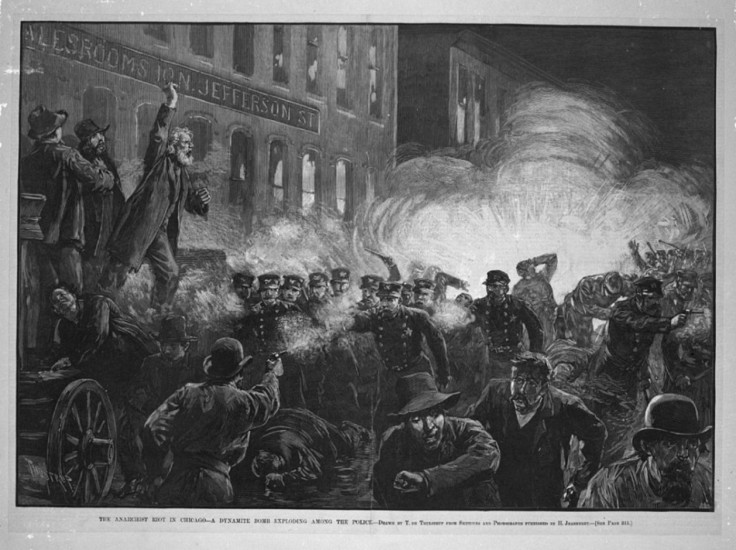What Is May Day? The Complicated History Of A Workers' Rights Celebration

May Day, also referred to as International Workers' Day, is a holiday with pagan roots that has slowly morphed into a worldwide celebration of worker solidarity.
The popular image of a birch tree branch festooned with colorful ribbons -- the maypole -- hearkens back to a medieval tradition. Back then, May Day involved colorful ceremonies to celebrate fertility and growth. In Celtic, the holiday was called Beltane. In German, it was referred to as Walpurgis. Even as far back as ancient Rome, revelers participated in a spring ceremony called Floralia.
May Day never become a major holiday in the United States; its pagan roots were frowned upon by Puritans, and in modern times it has often been blacklisted as a socialist or communist holiday.
But in fact, its modern incarnation was inspired by an 1886 riot in Chicago.
At that time, members of the American working class often endured unsafe environments and very long work days. They pushed for change, but the going was tough.
As early as the 1860's, working people agitated to shorten the workday without a cut in pay, but it wasn't until the late 1880's that organized labor was able to garner enough strength to declare the 8-hour workday, reports the Industrial Workers of the World Union. This proclamation was without consent of employers, yet demanded by many of the working class.
In a Chicago pamphlet called The Alarm, this call to arms was published on April 24, 1886:
Workingmen, to arms! War to the palace, peace to the cottage, and death to luxurious idleness! The wage system is the only cause of the world's misery. It is supported by the rich classes, and to destroy it they must be either made to work or die. One pound of dynamite is better than a bushel of ballots!
On May 1, 1886, the tension exploded in Haymarket Square, where thousands of people took to protest. A cautiously worded New York Times article described the day's events:
One good-sized procession, one small one, two small meetings, some gatherings too feeble to be called meetings, and less than 30,000 laboring men taking a holiday, either willingly or unwillingly, represent the first day of the era in which, it has been declared, eight hours shall constitute a day's work and 10 hours' pay shall be gotten for eight hours' work. [...] Opinion is divided to-night as to whether this is all there is to be of the eight-hour movement or whether it is a parade prior to an actual engagement.
The real violence did not erupt until May 4. Police clashed with protesters, and several were shot dead.
It took decades for the eight-hour work day to become the norm -- Ford Motor Company, for instance, didn't implement a well-paid, eight-hour workday until 1914 -- but those first American May Day protests set the stage for worker solidarity and paved the way for labor unions to have a greater voice in American policy.
This May Day will be celebrated all over the world. In the United States, activists who are part of the Occupy Wall Street movement are planning pickets, encampments and occupations in major cities from New York City to San Francisco. In Europe, many citizens who are struggling through the euro zone crisis are taking to the streets to protest against austerity measures. In Asia, workers in the Philippines, Taiwan and Malaysia are making a strong showing to demand higher wages. The holiday is being celebrated more officially in Russia, where President Dmitri Medvedev and Prime Minister Vladimir Putin participated in a government-organized parade in Moscow.
In short, May Day is a unique holiday that has, at one point or another, involved everything from pagan rituals to flowery celebrations to bloody protests. This May Day, whether you're tying ribbons onto a maypole or picketing on Wall Street to fight the establishment, take a moment to appreciate the long history of this complicated springtime holiday.
© Copyright IBTimes 2024. All rights reserved.






















